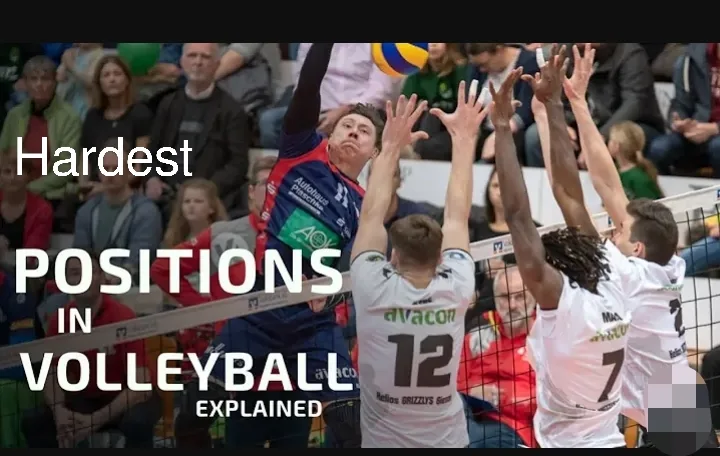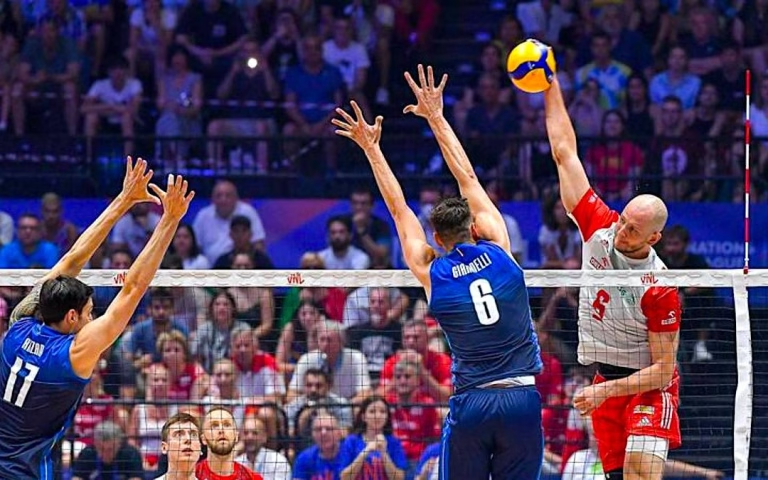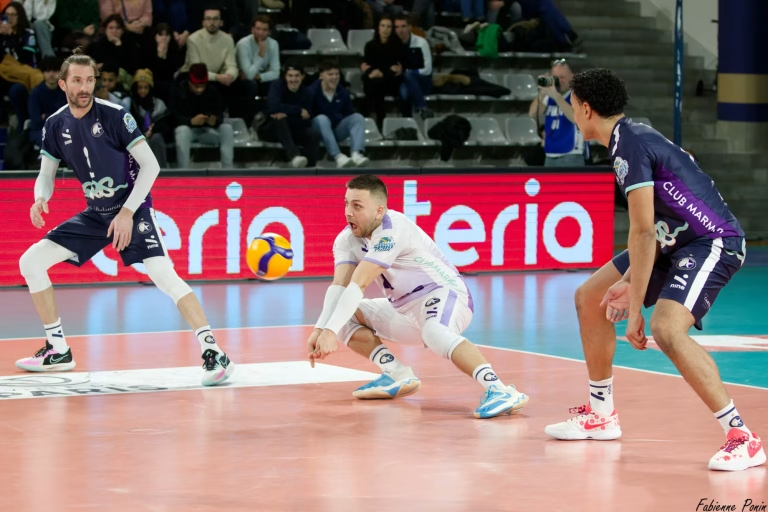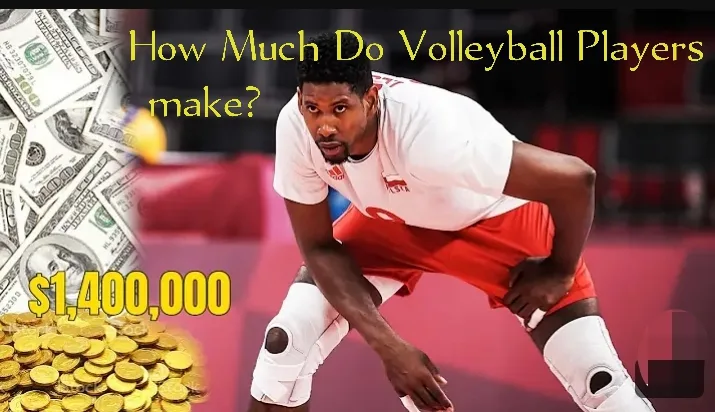So, you’re wondering about the hardest position in volleyball? Well, this is a very common question amongst volleyball players and lovers. Nevertheless, this question has sparked endless debates among players, coaches, and fans alike.
The truth is, there’s no single right answer, as the difficulty of each position depends heavily on individual skills, physical attributes, and even the specific team’s playing style.
However, we can do some comparing and contrasting of the unique challenges each position faces and explore why some consistently rank higher in the “difficulty” stakes.
What Makes a Position Hard in Volleyball?
The hardest positions in volleyball are defined by their need for a combination of technical skill, quick decision-making, physical stamina, and mental toughness.
Various factors can make a volleyball position challenging. Some of the most outstanding factors that make a position hard include:
- Physical demands: Positions requiring high jumping, quick movements, or rapid changes of direction can be physically demanding.
- Technical complexity: Roles needing advanced skills like precise passing, setting, or hitting can be difficult to master.
- Tactical responsibilities: Positions requiring strategic decision-making, like setters or liberos, can be challenging.
- High-pressure situations: Roles that often face critical game situations, like outside hitters or middle blockers, can be stressful.
- Spatial awareness: Positions needing constant awareness of teammates, opponents, and the ball can be mentally demanding.
- Adaptability: Roles requiring adjustments to different opponents, game plans, or teammates can be challenging.
- Leadership responsibilities: Positions like team captains or setters, which require guiding teammates, can be demanding.
- Speed and reaction time: Positions needing quick reactions, like liberos or defensive specialists, can be challenging.
- Endurance: Roles requiring sustained effort over long periods, like outside hitters, can be physically demanding.
- Mental toughness: Positions needing resilience, focus, and composure under pressure can be difficult.
Read more: Volleyball Positions and roles
Hardest Position in Volleyball
Let’s Compare and Contrast Different Volleyball Positions!
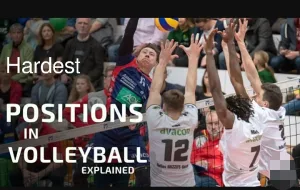
Let’s see some of the similarities and differences between different volleyball positions:
| Position | Primary role | Key Skills | Physical Demands | Mental Demands | Difficulty |
| Libero | Defensive specialist, back-row passing | Digging, passing, serving, court coverage | High stamina, agility, quick reflexes | High focus, anticipation, pressure management | High |
| Setter | Offensive playmaker, setting the ball | Setting technique, court awareness, decision-making | Good arm strength, agility, hand-eye coordination | High game intelligence, quick decision-making | High |
| Outside Hitter | Offensive, front and back-row attacks | Jumping, hitting power, passing, blocking | High jumping ability, power, speed, stamina | Adaptability, pressure management | High |
| Opposite Hitter | Offensive, primarily back-row attacks | Powerful hitting, blocking, serving | High hitting power, jumping ability, stamina | Adaptability, strategic shot selection | High |
| Middle Blocker | Blocking, quick attacks | Blocking technique, quick reflexes, jumping | High jumping ability, strength, quick reflexes | Anticipation, reading the opponent’s attack | High |
| Right-Side Hitter | Offensive, front and back-row attacks; Blocking | Powerful hitting, blocking, serving | High hitting power, jumping ability, stamina | Adaptability, strategic shot selection | High |
See Also: Pin Hitter Volleyball Position and Role Explained
1. Setter Position
The setter is often referred to as the “brain” of the team. This position demands exceptional leadership and technical expertise. Their skill directly impacts the team’s scoring potential.
1. The Mental Demands:
Setters need exceptional awareness, anticipating the movements of their teammates and opponents. They must make quick decisions under pressure, choosing the right set for the right hitter based on the opponent’s defense and their teammates’ strengths. A poor set can easily lead to a missed attack.
See Also: 4 Best Position in Volleyball
2. The Technical Demands:
Setters need to consistently deliver accurate and well-timed sets to their hitters, allowing them to attack effectively. Mastering different types of sets (e.g., quick sets, high sets, back sets) is essential for versatility.
3. Key Challenges:
- Split-second decisions: setters must choose the right attacker under immense time pressure.
- Coordination: They manage team movements, acting as a bridge between defense and offense.
- Deception: successful setters use strategic misdirection to confuse blockers.
4. Tips for Setters:
- Master different setting techniques.
- Develop court awareness, game intelligence, and the ability to make quick decisions under pressure.
- Practice different setting techniques
- Work on your communication skills with your teammates.
2. Libero Position
The libero specializes in defense. This position is physically demanding and mentally draining. The libero’s role usually seems deceptively simple at first glance, but in the end, it’s a physically and mentally demanding position.
See Also: Volleyball Ready Position: What is it’s and how is it used?
1. The Physical Demands:
The libero’s role is demanding on the body. The constant diving and lunging lead to bumps, bruises, and a higher risk of injuries like shoulder dislocations and knee problems. The stamina required to maintain this high level of exertion throughout a match is immense.
2. The Mental Demands:
Beyond the physical demand, the mental demand on a libero is equally challenging. Liberos must remain focused and alert at all times, anticipating the opponent’s attacks and reacting instantly. The pressure to consistently deliver perfect passes under immense pressure is enormous. A single missed pass can drastically impact the team’s scoring opportunities.
3. Key Challenges:
- Constant vigilance: Liberos must anticipate and react to every attack.
- Unyielding endurance: With no attacking duties, their focus is entirely defensive, involving dives, digs, and passes.
- Team reliance: Liberos initiate offense with accurate passes, making them critical in transitions.
4. Tips for Liberos:
- Master fundamental skills like passing and digging.
- Strength and conditioning are vital to withstand the physical demand.
- Develop mental resilience to handle pressure
3. Middle Blocker Position
Middle blockers are the tallest and most intimidating players on the court, tasked with blocking attacks and quick offensive plays. Their role requires timing and strategic thinking.
1. The Physical Demands:
Middle blockers need exceptional jumping ability, strength, and quick reflexes. They must be able to jump high enough to effectively block powerful spikes, requiring significant leg strength and explosive power.
2. The Mental Demands:
Middle blockers need to anticipate the opponent’s attacks, reading their setters and hitters to effectively block shots. They also need to be able to adjust their blocking strategy based on the opponent’s offensive plays.
3. Key Challenges:
- Speed and agility: They need to react quickly to set up blocks.
- Multitasking: Middle blockers must transition between defense and offense seamlessly.
- Positioning: Effective blocking relies on reading opponents’ strategies.
4. Tips for Middle Blockers:
- Focus on developing a professional jumping ability, strength, and blocking technique.
- Work on your skills and ability to read the opponent’s attacks and adjust your blocking strategy accordingly.
4. Outside Hitter Position
Outside hitters are versatile players responsible for both attacking and defensive plays. Outside hitters are often considered the most versatile players on the court. They’re involved in both offense and defense. Their position requires a wide range of skills and athleticism.
1. The Physical Demands:
Outside hitters need exceptional jumping ability, power, and speed. Their position requires constant jumping to hit powerful spikes. Such jumps require significant leg strength and explosive power. They also need to be agile enough to play solid defense.
2. The Mental Demands:
Outside hitters need to be mentally tough. They must be able to handle the pressure of consistently delivering powerful attacks. They also need to be able to read the opponent’s defense and adjust their attacks accordingly.
3. Key Challenges:
- Power and precision: Delivering strong, accurate spikes while maintaining control.
- Stamina: They participate in almost every play, requiring high endurance.
- Leadership: Often seen as team leaders, outside hitters must maintain morale and focus during tough matches.
4. Tips for outside hitters:
- Focus on developing exceptional jumping ability, hitting power, and defensive skills.
- Engage in a lot of strength training and plyometrics to improve your athleticism.
- Develop mental toughness
- Practice to adapt to different game situations.
5. Defensive Specialist Position
The defensive specialist supports the libero in bolstering the team’s back-row defense.
1. The Physical Demands:
The defensive specialist requires quick movements, fast reflexes, and endurance to cover the back row. Players in this position need to be able to rapidly change direction, dive, and dig balls with precision. This position demands excellent agility, speed, and reaction time. They must also have strong core muscles to maintain stability and control while moving quickly around the court.
2. The Mental Demands:
The DS position requires a high level of mental toughness, focus, and court awareness. Players must be able to read the opponent’s offense, anticipate where the ball will be hit, and make split-second decisions to position themselves accordingly. They must also maintain a high level of concentration and composure under pressure, as their actions can significantly impact the team’s defense.
3. Key Challenges:
- Reflexes: Reacting to powerful spikes and unpredictable shots.
- Adaptability: Adjusting positioning to counter various attacking styles.
- Precision: Consistently delivering accurate passes under pressure.
4. Tips for Defensive Specialists:
- Develop exceptional ball-handling skills
- Improve your digging, passing, and setting skills and accuracy.
- Improve your court vision
- Engage in exercise to enhance your speed and agility.
- Practice to stay focused and composed.
Read More: What is a DS in Volleyball? Defensive Specialist Explained
6. Opposite Hitter Position
The opposite hitter, also known as the right-side hitter, is another crucial offensive player. They often play a similar role to the outside hitter but from the opposite side of the net. They need a combination of power and precision.
1. The Physical Demands:
Opposite hitters need to be powerful hitters, capable of delivering strong attacks from the back row. They also need good blocking skills to defend against the opponent’s attacks.
2. The Mental Demands:
Opposite hitters often face a more challenging blocking scheme than outside hitters, requiring them to be quick thinkers and adapt their attacks accordingly. They also need to be consistent in their performance, delivering powerful and accurate attacks.
3. Key Challenges:
- Blocking and Defense: Opposites face the opponent’s best blockers, making scoring harder.
- Variety in Attack: Opposites need to master different types of attacks (e.g., sharp angles, deep shots, quick hits).
- Reading the Game: Opponents must read the opponent’s defense and adjust their attack accordingly.
4. Tips for Opposite Hitters:
- Focus on developing your hitting power and accuracy.
- Work on your blocking skills and ability to read the opponent’s defense.
FAQs About Hardest Position in Volleyball

Which volleyball position is the hardest overall?
While opinions vary, the setter and libero are widely considered the hardest due to their mental and physical demands. The setter must direct gameplay, while the libero ensures defensive consistency.
What is the easiest position in volleyball?
Typically, the opposite hitter is considered easier as it focuses primarily on attacking without as much defensive responsibility. However, it still requires skill.
Can a volleyball player master multiple positions?
Yes, but it requires years of training and a deep understanding of each role’s requirements.
Which position in volleyball requires the most stamina?
The libero position often demands the most stamina due to the constant running, diving, and scrambling involved in defensive play.
Which volleyball position requires the most technical skill?
The setter position arguably requires the most technical skill, needing precise setting technique and a deep understanding of offensive strategies.
Which volleyball position is most injury-prone?
The libero and middle blocker positions are often cited as being the most injury-prone due to the repetitive jumping and high-impact movements involved.
Can a volleyball player be successful in multiple positions?
Yes! Many successful volleyball players have experience and proficiency in multiple positions, showcasing their versatility and adaptability.
Conclusion
The hardest position in volleyball is subjective. Generally, each volleyball position has its own challenges. All positions require specific skills, physical athleticism, and mental alertness.
It is important to know that some volleyball positions demand more physical activeness and lesser mental calculations, while some require a higher level of strategic thinking and mental resilience and lesser physical exhaustion.
Nevertheless, the best players are those who can master the specific demands of their position and contribute effectively to the team’s overall success.

